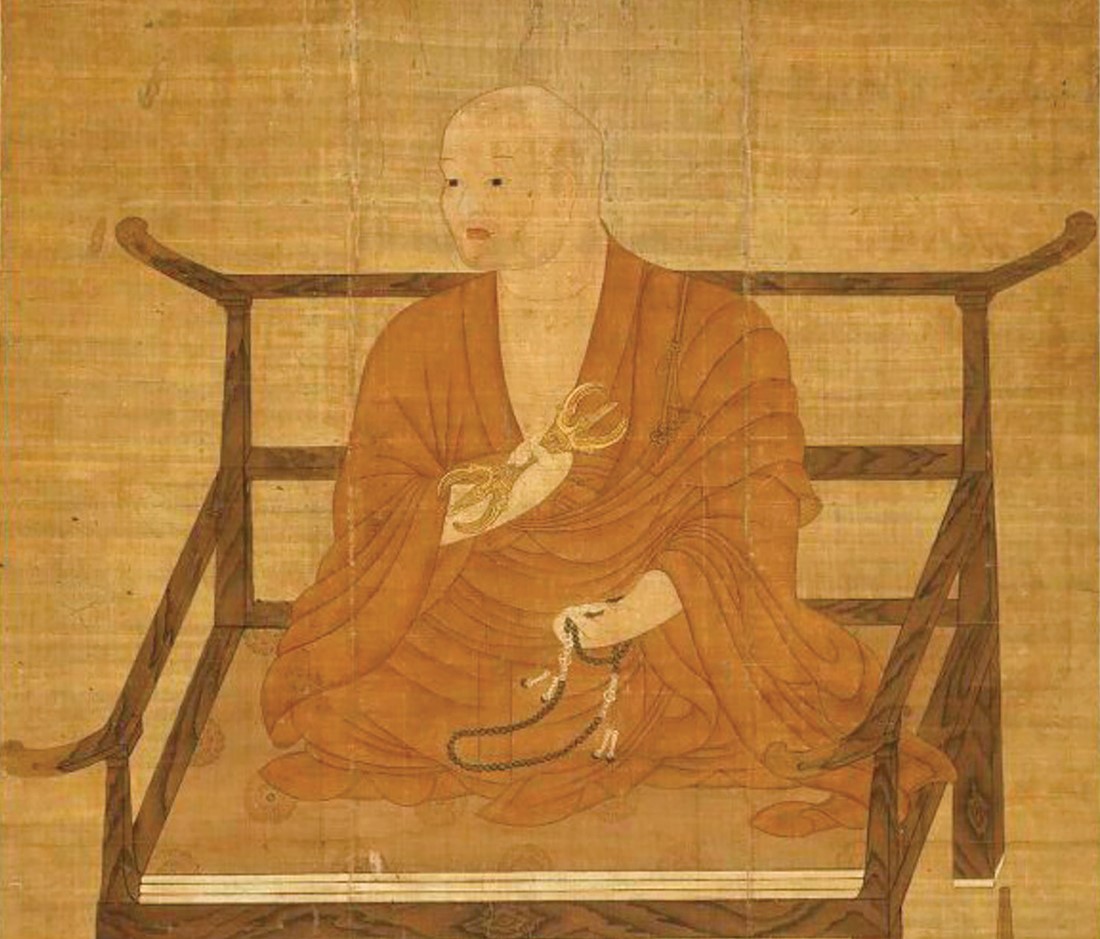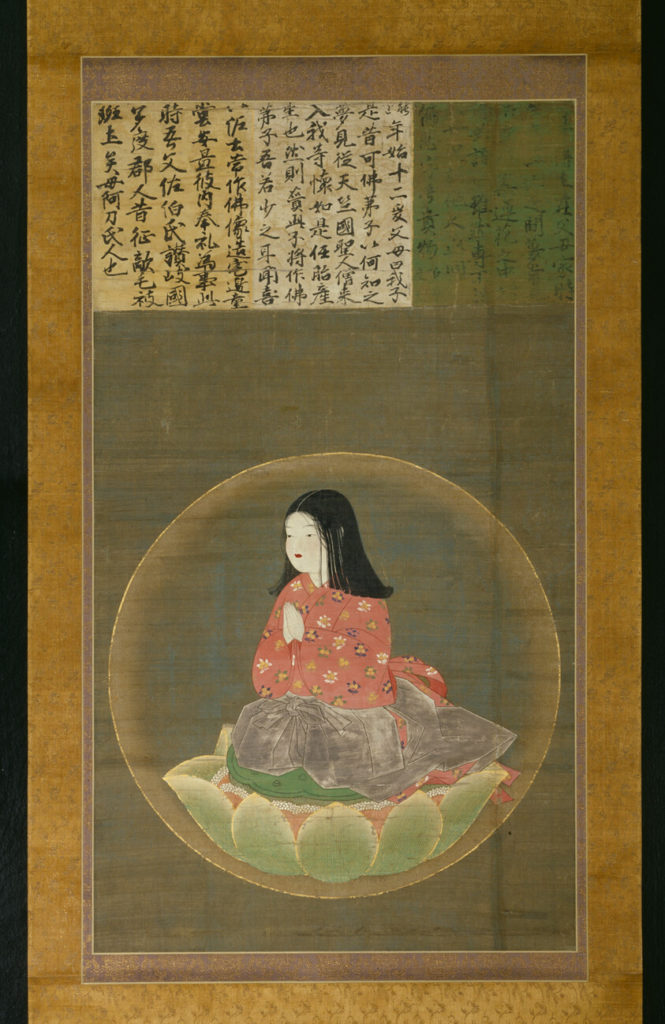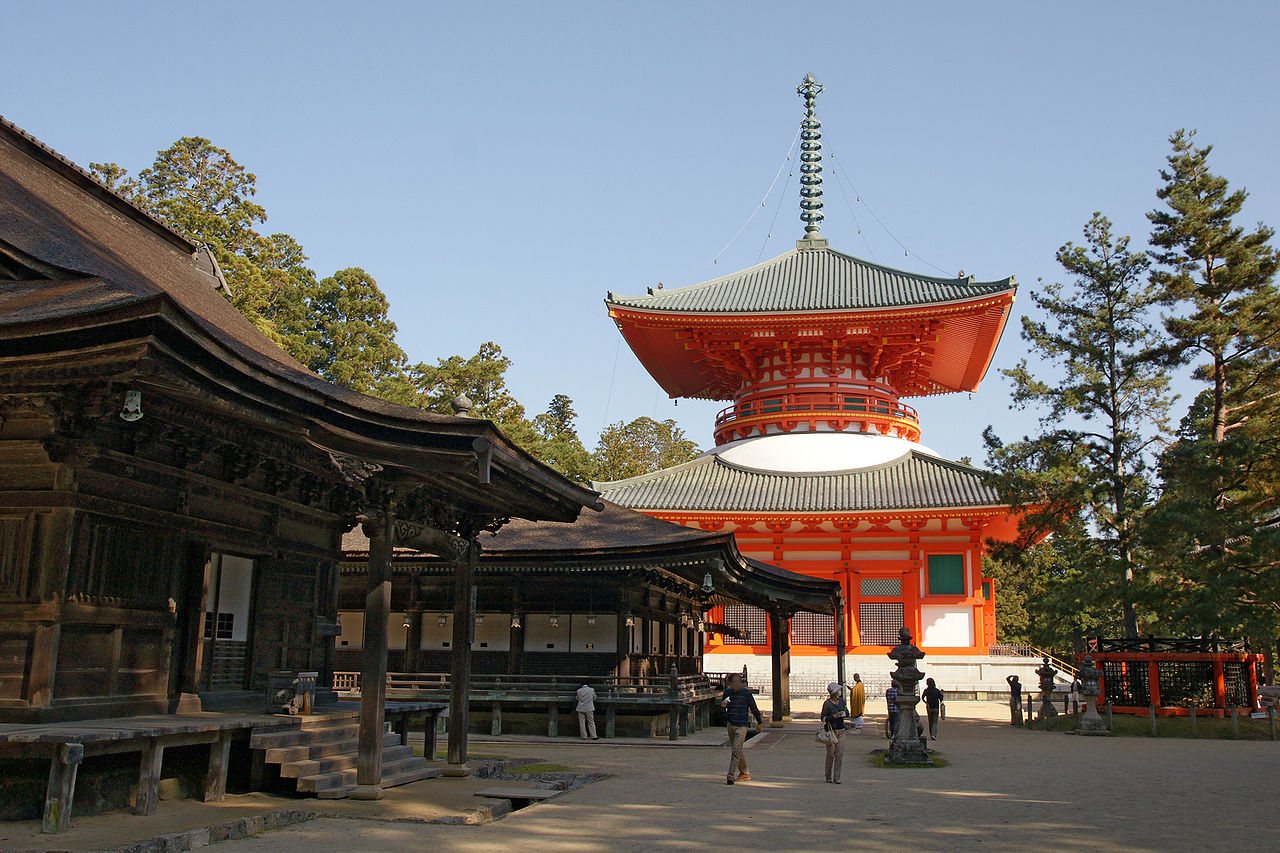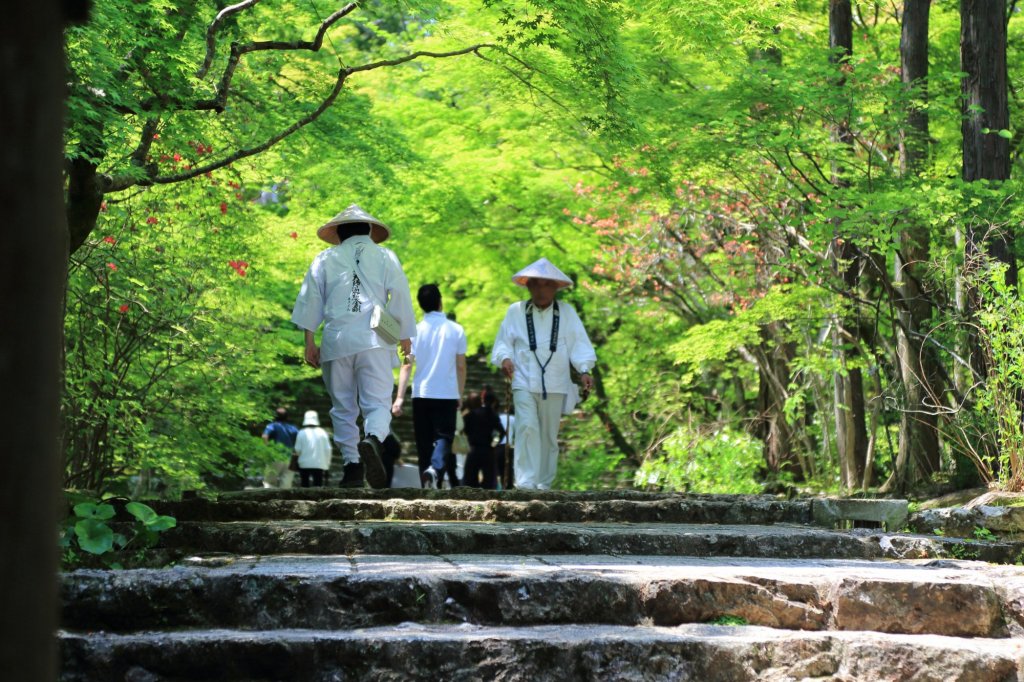The Japanese Buddhist priest Kūkai, (774–835 CE) continues to be one of the most popular historical figures in Japan today. He introduced Shingon esoteric Buddhism into his country during the early Heian period, (794–1184).
The emperor awarded him the posthumous title of ‘Kōbō Daishi’, (Great Master Who Propagated the Dharma). Kūkai also exerted major influences on the development of Japanese calligraphy, poetry, and literary theory. He drew the plans for what has become one of the major spiritual and tourist destinations in Japan, the Mount Kōya Temple complex, which is designated as a UNESCO World Heritage Site. He also constructed ponds and irrigation systems still in use today, on his native island of Shikoku. Kobo Daishi (Kukai), via Tricycle Buddhist Review
Kobo Daishi (Kukai), via Tricycle Buddhist Review
Due to his significance in Japanese Buddhism, Kūkai, (meaning air-sea) is associated with many stories and legends. One such legend attributes the invention of the kana syllabary to Kūkai, with which the Japanese language is written to this day.
In another legend, Kūkai was welcomed by two Shinto deities, (a male named Kariba and a female named Niu) whilst searching for a place to build a temple on Mount Kōya. Kariba was said to have appeared as a hunter and guided Kūkai through the mountains, with the help of two dogs; one white, one black. Later, both Kariba and Niu were interpreted as manifestations of the Buddha Vairocana, who was the central figure in Shingon Buddhism and subject of Kūkai’s lifelong interest.
Early life
His first name is generally believed to be Mao, (meaning true fish). He was born on June the 15th, Houko 5, (774) in the precinct of Zentsū-ji temple, in Sanuki province, on the island of Shikoku. His family were members of the aristocratic Saeki family. The family home was very religious. One day, his father and mother had a simultaneous dream, of an Indian Buddhist monk riding on top of a glittering violet-coloured cloud, which entered into the mother’s chest. At Shingon, June 15th takes the name of ‘Aoba Matsuri’ (Fresh Leaves Festival) and marks Daishi’s birthday. Portrait of
Portrait of
His childhood involved making Buddhist images in the dirt, collecting grass, or wood to make shrines and worshipping the Buddha. At seven years of age, he ascended the nearby Shashin ga Dake Peak and prayed to the Buddha: “When I become big, I want to aid the ailing. If I shall have that power, please bless me with a long life,” and then he jumped off a high cliff into the ravine. From below, a beautiful sound manifested, along with a celestial maiden. Young Mao was saved. He was overjoyed and thus became even more zealous in his studies.
By the age of 14, he was studying at Sanuki. When he was 15, he left for the capital (Nagaoka) and studied the writings of his uncle, the Confucian scholar Ato-no Otari, and entered university at the age of 18. There he encountered a monk who first raised his interest in Buddhism by revealing a technique of repetition to better remember texts.
At age 20, he overcame the resistance from his family and entered the priesthood at Makino Osanji in Izumi no Kuni (Osaka) and adopted the name Kukai. His deliberations on the merits of the three main schools of thought – Buddhism, Confucianism, and Taoism – are set out in his ‘Indications’, a fictional discussion, written circa 798 CE, between three men. Each man represents one of the three branches of philosophy. Needless to say, the Buddhist is the more convincing of the three. Statue of
Statue of
Shingon Buddhism
Kukai’s studies of Chinese classics at the capital allowed him to visit China as part of a diplomatic embassy between 804 and 806 CE. He studied there under the master Hui-kuo, abbot of the Ching Lung, (Green Dragon) Temple and was chosen as the master’s successor. Thus he became an advocate of esoteric Buddhism, or mikkyo, which meant that only the initiated, (only those who gave up their worldly life and resided in a monastery) could know the Buddha and thus achieve full enlightenment.
The Shingon (True Word) Sect, which Kukai studied in China, stipulated that ideal leadership should not be based on Confucian principles, (as was hitherto the case) but on the teachings of the Buddha, which would be revealed to an emperor on his succession, following certain esoteric initiation rites. Consequently, priests, (with their privileged knowledge) had the highest status in the state according to Kukai, higher even than emperors.
Crucially, Shingon Buddhism proposed that an individual could achieve enlightenment in their own lifetime and need not wait for death. Rituals included meditation carried out while the body was held in various postures, sacred hand gestures, (mudras) and the repetition of secret mantras. Great importance was given to the power of prayer.
Despite Kukai’s own aristocratic background, he was known to have practised what he preached and lived the life of an ascetic, as reflected in this poem from the Seirei Shu, ‘Collected Inspirations‘, an anthology of his works compiled by his disciple Shinzei:
Valley water – one cup in the morning sustains life;
Mountain mist – one whiff in the evening nurtures the soul.
Hanging moss, delicate grasses suffice to clothe my body;
Rose leaves, cedar bark – these will be my bedding.
Heaven’s compassion spreads over me the indigo canopy of the sky;
The Dragon King’s devotion passes round me curtains of white clouds.
Mountain birds sometimes come, each singing its own song;
Mountain monkeys nimbly leap, displaying incredible skill.
Spring flowers, autumn chrysanthemums smile at me;
Dawn moons, morning winds cleanse the dust from my heart. Danjō-garan, head temple of Shingon Buddhism, Mount Koya
Danjō-garan, head temple of Shingon Buddhism, Mount Koya
Mount Kōya
In 816, Emperor Saga accepted Kūkai’s request to establish a mountain retreat at Mount Kōya, as a retreat from worldly affairs. The ground was officially consecrated with rituals lasting seven days. Kūkai’s vision was that Mt. Kōya was to become a representation of the Mandala of the Two Realms, that form the basis of Shingon Buddhism. At the centre of the temple complex sits an enormous statue of Vairocana, who is the personification of Ultimate Reality.
The project was not fully realised until after Kūkai’s death. The temple remains the headquarters of the Shingon Buddhist Sect.
Death
Kūkai believed that rather than use this short life to promote the teachings, he should enter the next realm and help rescue those suffering throughout eternity. Daishi passed away on March 21, Jouwa 2, (835) at the age of 62 and left future matters to his students. For one week, until his passing, he purified one room of his dwelling. He ate nothing and purified his body with perfume. He sat in the lotus position, put his hands in a mudra form and entered into the meditation of Maitreiya. Legend has it that Kūkai has not died, but has entered into an eternal samadhi, (meditative trance) and is still alive on Mount Kōya, awaiting the appearance of Maitreya, the future Buddha.
Shikoku henro
The Shikoku Pilgrimage, also called the ‘Shikoku henro (四国遍路)’ or the ‘88 pilgrimage’ was established over 1,200 years ago. Inspired by Kūkai, the standard walking route, (approximately 1,200 kilometres, or 750 miles long) can take anywhere from 30 to 60 days to complete. The pilgrimage is traditionally completed on foot, although modern pilgrims use cars, taxis, buses, motorcycles, or bicycles. The pilgrimage and its customs are deeply ingrained in the people of Shikoku. Visitors are often moved by their legendary hospitality of the local people and the osettai culture. *Osettai is the act of giving gifts to pilgrims on the henro. Shikoku Henro (Shikoku Pilgramage)
Shikoku Henro (Shikoku Pilgramage)